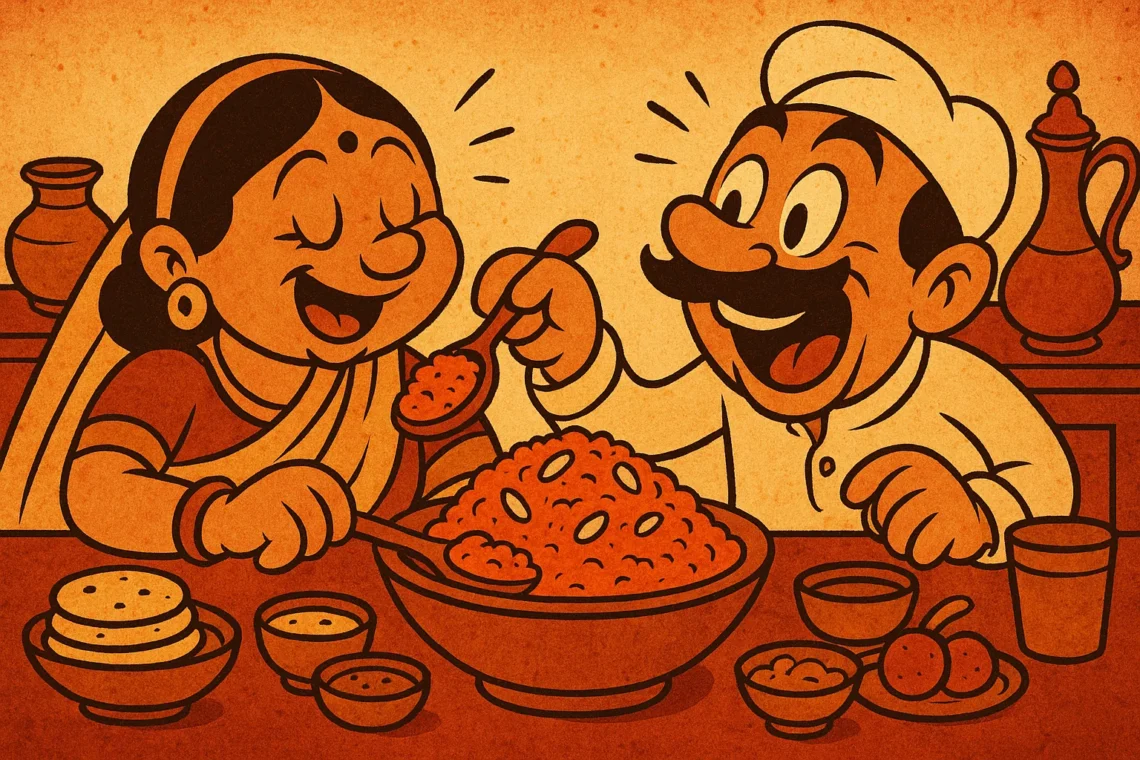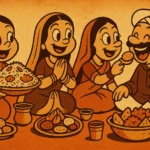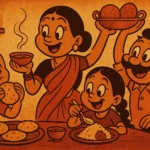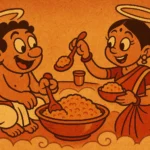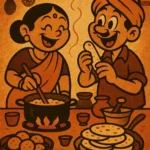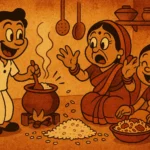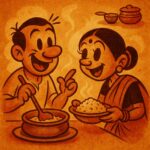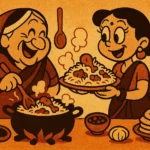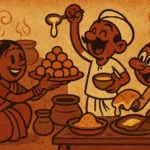When someone dies, the house fills with silence first. Then with people. Then, slowly, with food. Plates of cut fruit, sugarless tea, quiet rice. But somewhere between the condolences and the fatigue, someone—usually an older woman who knows exactly what she’s doing—will start grating carrots. Not loudly. Not for attention. Just for comfort. And before you know it, the smell of ghee and cardamom seeps through the grief, and gajar halwa starts cooking.
It seems like a strange choice at first. A sweet in a time of sorrow. But that’s exactly why it appears. Because grief, in an Indian home, is rarely served alone. It comes with food. And gajar halwa, with its slow stirring and endless patience, is one of the kindest things you can put on a stove when words no longer work.
Cooking as Coping
The act of making gajar halwa isn’t quick. You don’t toss it together like upma or fry it like pakoras. It takes time. The carrots must be peeled, grated finely. The milk must simmer down. The sugar added only once everything has softened. The ghee must be generous, but not greasy. It’s a process that keeps your hands busy and your heart anchored. When there’s nothing to say, the stirring says it for you.
I remember it happening in our house after my grandfather passed. No one really ate that day. People picked at things, left cups of tea untouched. But by evening, the smell of gajar halwa filled the kitchen. It didn’t shout. It didn’t demand. It just lingered. Like memory. Like warmth. Like the possibility that something soft still existed in the middle of all that ache.
The Taste of Permission
Grief makes you forget hunger. Gajar halwa reminds you. Not with pressure, but with presence. A spoon placed gently into your hand. A bite that’s not too sweet, not too heavy. Just enough to say, “You’re still here.” And that’s often what we need most. Not comfort, but permission—to still feel something other than loss. To still enjoy a flavor. To still be alive, even when someone else is not.
In many families, gajar halwa is made for celebration—weddings, winters, reunions. But I’ve come to think of it as a grief dish. Because it requires the same things grief does: slowness, stirring, waiting. And because when your voice cracks and your appetite vanishes, a spoonful of gajar halwa is the gentlest way someone can tell you, “I’m here with you.”
A Quiet Kindness
It doesn’t fix anything. That’s not the point. It won’t fill the absence or bring anyone back. But it gives you a moment. A soft, warm moment. A moment where you stop spiraling, if only briefly. Where your breath matches the rhythm of the stir, the spoon, the sweetness. Where you are cared for, quietly.
Years later, I still associate that smell with loss. But not in a painful way. In a human way. Because sometimes, the only way we know to respond to sorrow is to cook. To peel, to grate, to simmer. To make something slowly and with intention. Something that sits in the middle of a dining table, among tissue boxes and tea cups, and reminds you that life, in all its mess and memory, continues.
Gajar halwa and grief are both slow, heavy, and unexpectedly healing. Neither asks for words. But both remind you that even in the deepest sorrow, there is still room for warmth.
Born in Mumbai, now stir-frying feelings in Texas. Writes about food, memory, and the messy magic in between — mostly to stay hungry, sometimes just to stay sane.

